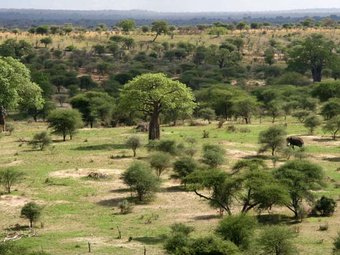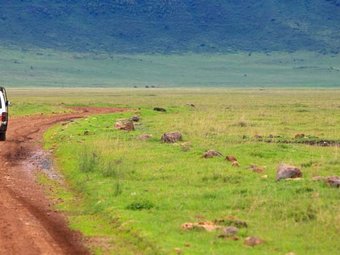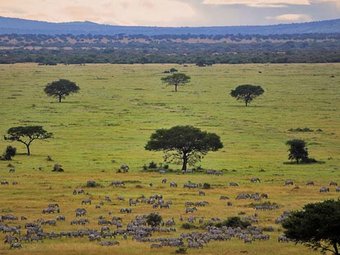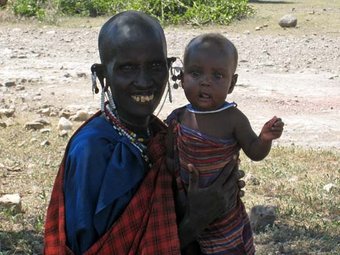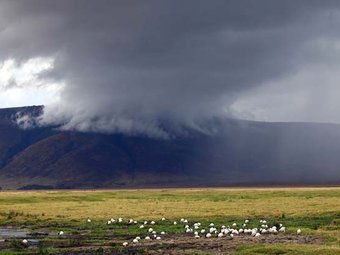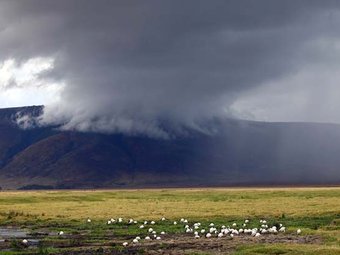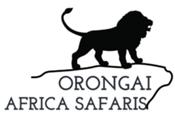Famouse Serengeti NP
7 Days Mid-Range Famous Serengeti National Park
$3068-3796 USD
pp
Safari summary
On this safari will visit the two greatest safari parks in the world. Masai Mara and Serengeti are the best places to experience the great wildebeest migration. This display of mother nature comes with a lot of active wildlife and therefore great for wildlife viewing. You can either do a flying package or a road package. All our tours are customizable. The amount of days, parks to visit and type of accommodation can be changed per your requests
About this tour
| Tour type | Custom, tailor-made, private | |
| Main focus | Game drives | |
| Activity level | Easy activity | |
| Best months | All months | |
| Countries | ||
| Parks |
Fine details
Safari highlights
- Night game drives
Itinerary
Day 1
Arusha | Lake Manyara
Day 1: Arusha To Lake Manyara Pick up at 7.30am then drive to Lake Manyara National Park, with picnic lunch provided arrive with a game drive rest of the day. Lake Manyara National Park is a Tanzanian national park located both in Arusha Region and Manyara Region, Tanzania. The park consists of 330 km2 (130 sq mi) of arid land, forest, and a soda-lake which covers as much as 200 km2 (77 sq mi) of land during the wet season but is nearly nonexistent during the dry season. Lake Manyara National Park is known for the flamingos that inhabit the lake. During the wet season they inhabit the edges of the lake in flocks of thousands but they are not so present during the dry season.
Day 2
Serengeti
Day 2 -3: Manyara –Serengeti Depending on the month you will be doing the safari, today we will drive from Central Serengeti to either North, South or the western corridor of Serengeti National Park following the migration. Serengeti plains: the almost treeless grassland of the south is the most emblematic scenery of the park. This is where the wildebeest breed, as they remain in the plains from December to May. Western corridor: the black clay soil covers the savannah of this region. The Grumeti River and its gallery forests is home to Nile crocodiles, patas monkeys, hippopotamus, and martial eagles. The migration passes through from May to July. Northern Serengeti: the landscape is dominated by open woodlands (predominantly Commiphora) and hills, ranging from Seronera in the south to the Mara River on the Kenyan border. Apart from the migratory wildebeest and zebra (which occur from July to August, and in November), this is the best place to find elephants, giraffe, and dik-dik.
Day 4
Serengeti
Day 4 -5: Northren, Southren Serengeti Depending on the month you will be doing the safari, today we will drive from Central Serengeti to either North, South or the western corridor of Serengeti National Park following the migration. Serengeti plains: the almost treeless grassland of the south is the most emblematic scenery of the park. This is where the wildebeest breed, as they remain in the plains from December to May. Western corridor: the black clay soil covers the savannah of this region. The Grumeti River and its gallery forests is home to Nile crocodiles, patas monkeys, hippopotamus, and martial eagles. The migration passes through from May to July. Northern Serengeti: the landscape is dominated by open woodlands (predominantly Commiphora) and hills, ranging from Seronera in the south to the Mara River on the Kenyan border. Apart from the migratory wildebeest and zebra (which occur from July to August, and in November), this is the best place to find elephants, giraffe, and dik-dik.
Day 6
Arusha | Ngorongoro Crater
Day 6: Ngongoro Crater Today we will drive to Ngorongoro Conservation Area, with picnic lunch provided we will descend into the crater and have a game drive rest of the day. The main feature of the Ngorongoro Conservation Authority is the Ngorongoro Crater, the world’s largest inactive, intact and unfilled volcanic caldera. The crater, which formed when a large volcano exploded and collapsed on itself two to three million years ago, is 610 meters (2,000 feet) deep and its floor covers 260 square kilometers (100 square miles). Estimates of the height of the original volcano range from 4,500 to 5,800 meters (14,800 to 19,000 feet) high. The elevation of the crater floor is 1,800 meters (5,900 feet) above sea level. The Crater was voted by Seven Natural Wonders as one of the Seven Natural Wonders of Africa in Arusha. Approximately 25,000 large animals, mostly ungulates, live in the crater. Large animals in the crater include the black rhinoceros, the African buffalo or Cape buffalo, and the hippopotamus.
Day 7
Arusha
Day 7: Arusha Arusha town or your next destination Ngoro Ngoro Crater to Arusha After breakfast, we will drive back to Arusha, drop off at JRO Airport to catch your flight back home or to your next destination.
Here are the latest 6 tours by Orongai Africa Safari. See all 29 tours.
A Remarkable Day Trip Tour
Tour by: Orongai Africa Safari
Countries:

Focus: Game drives
Creter Day Trip
Tour by: Orongai Africa Safari
Countries:

Focus: Game drives
serengeti & Zanzibar extension
Tour by: Orongai Africa Safari
Countries:

Focus: Game drives
Touch- the African Wilderness
Tour by: Orongai Africa Safari
Countries:

Focus: Game drives
Touch of the Wilderness luxury
Tour by: Orongai Africa Safari
Countries:

Focus: Game drives
Journey of the wilderbeest
Tour by: Orongai Africa Safari
Countries:

Focus: Game drives
Cleanliness of vehicle
Meet and greet team
Quality of itinerary
Responsiveness of staff
